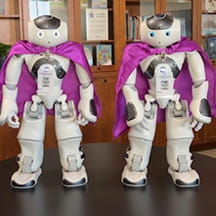The confluence of severe spikes in influenza, COVID-19 and respiratory syncytial virus (RSV) cases in the fall of 2022 overwhelmed the emergency departments and inpatient capacities of children’s hospitals around the country. In addressing that surge—and anticipating the next one—Children’s Hospital of Philadelphia (CHOP) devised new processes and protocols by filling two primary “boxes.”
Think outside the box
The influx of viral illnesses led to spikes in ED wait times and LWBS (left without being seen) numbers at CHOP. Facing these challenges required new thinking.
“We wanted to think about each step of the process and what made sense,” says Lisa Tyler, MS, RRT-NPS, RPFT, AE-C, director of respiratory care and ECMO services at CHOP. “Obviously, that's something everyone should be doing all the time, but it's not always on the forefront—this was an opportunity for us to be really critical of the things we do.”
The hospital formed a multi-disciplinary task force to meet the surge-related issues in its ambulatory, emergency department and inpatient settings by decreasing demand and increasing capacity across its health system. Some process changes that came from that include:
- Alternative care areas. CHOP optimized space utilization in the hospital to ensure patients would receive the care they needed quickly and safely instead of spending more time held in the ED. One example is transitioning (and appropriately staffing) sparsely populated observation units ordinarily intended for less-acute patients to inpatient cohorts for patients in respiratory distress.
- Initiating treatment in triage. Although not traditionally deployed in the ED, Tyler says getting respiratory therapists involved earlier in the patient flow during high-volume periods helped speed care to the children who needed it most while reducing the possibilities for LWBS patients.
- New pathways. Tyler and her team examined all care pathways and protocols for opportunities to maximize efficiency during surge periods, emphasizing proactive shifts in resource usage during anticipated high-peak periods—instead of reacting to a spike in patient demand after it’s begun.
“Don't be afraid to think outside the box for solutions, even when you think they're not doable,” Tyler says. “It's easy to say we can't do something, but I try in my practice to not come up with a hard ‘no’ until we’ve looked at every possible angle.”
Don’t put people in boxes
A pivotal aspect of success in revamping the respiratory surge plan, according to Tyler, is capturing her staff’s full potential.
“I've learned to never underestimate what people can bring to the table to support the greater good,” Tyler says. “We have such a great workforce, and understanding their abilities, working together collaboratively, and not putting them in boxes is essential. In health care, people are well prepared and can do a lot of things that you might not realize they can do.”
In addition to streamlining workflows to ensure all staff members are working to their highest capability, Tyler and her team found other workarounds to meet patient demands with a limited availability of respiratory clinicians. They minimized documentation practices to expedite help to the floor, offered enhanced employee perks to boost staff well-being, and brought on respiratory therapy students to assist with tasks such as stocking, cleaning, and deploying and retrieving equipment.



